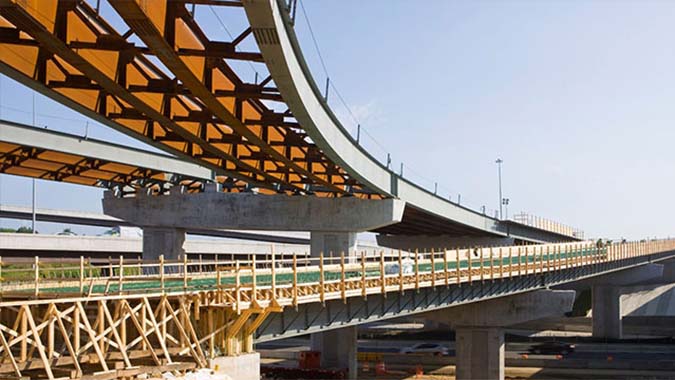
photo credit: Transurban
| Location | Fairfax County, Virginia |
|---|---|
| Project Sponsor / Borrower | Virginia Department of Transportation (VDOT) |
| Program Areas |
|
| Mode | High Occupancy Toll (HOT) Road |
| Description | The Capital Beltway High Occupancy Toll (HOT) Lanes project (officially the 495 Express Lanes) is a public-private partnership between VDOT and Capital Beltway Express, LLC (a joint venture of Fluor and Transurban) that opened in November 2012. The project limits are from the Springfield Interchange (south) to just north of the Dulles Toll Road (14 miles). Previously, the Capital Beltway had four lanes in each direction. Improvements included:
|
| Cost | $2.068 billion |
| Funding Sources | Private Activity Bonds - $589 million TIFIA Loan - $589 million Commonwealth of Virginia grant - $409 million VDOT change-order funding - $86 million Interest income - $47 million Private Equity - $348 million |
| Project Delivery / Contract Method | Design-build-finance-operate-maintain Toll Concession (75 years) |
| Private Partner | Capital Beltway Express, LLC - Joint venture between Fluor and Transurban |
| Project Advisors / Consultants | Virginia Department of Rail and Public Transportation ATCS/CH2M Hill (GEC) To USDOT TIFIA JPO
|
| Lenders | Bondholders, USDOT TIFIA |
| Duration / Status | Construction began in spring 2008 and reached substantial completion on November 8, 2012. The facility opened to traffic on November 17, 2012. The total length of the concession is 85 years - five years of construction and 80 years of operation. |
| TIFIA Credit Assistance | Direct Loan - $589 million The TIFIA loan holds a subordinate lien on a pledge of the project's toll revenues and interest income, after operations and maintenance expenses, certain capital expenditures, senior debt service reserve, and debt service payments to senior lenders. |
| Financial Status / Financial Performance | Financial close and TIFIA credit agreement signed on December 20, 2007; Senior Bonds marketed in June 2008. TIFIA interest payments are expected to begin in 2017. Loan repayments are scheduled to begin in 2032 and conclude in 2047. The TIFIA loan is structured with five years of capitalized interest during construction followed by five years of partially capitalized interest during ramp-up; then current interest only for 15 years followed by 15 years of interest plus principal. Due to lower than expected toll revenues during the first two years of operations, Capital Beltway Express and its lenders restructured the project's debt in May 2014 by contributing an additional $280 million in private equity and $150 million in existing project reserves to reduce the PAB debt - which must be repaid before the TIFIA loan - by 60 percent. |
| Innovations |
|
| Related Links / Articles | |
| Contacts | Larry O. Cloyed, PMP |